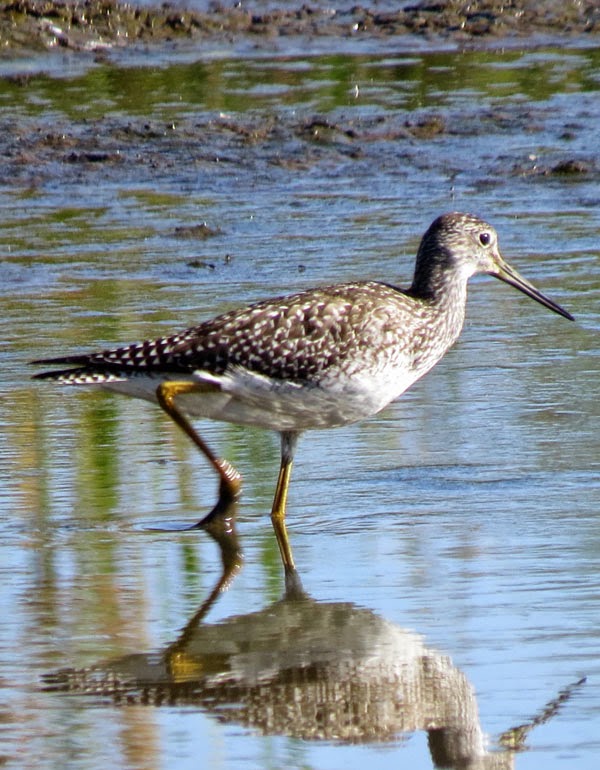Least Sandpipers as shown in the photo are quite small, in fact at six inches they
are the smallest in the Sandpiper family. Yesterday morning when we visited Fairview
Wetlands, Least Sandpipers provided us with the largest count at about 20 birds. This was a surprising difference from two
weeks ago when we were there and Virginia Rails were the largest number at 10
birds, and yet yesterday not a one could be seen or heard even after an attempt
to call them in. Least Sandpipers are quite common and normally easy to separate
from other similar sized sandpipers by their yellow-greenish legs. But these birds were a little hard to make a
positive identification on because they were up to their elbows in mud so to
speak.
The second largest count went to Greater Yellowlegs at seven
birds for this small pond. A much larger bird, they measure fourteen inches
from bill to tail.
The Killdeer count was two. They measure ten and a half inches.
A single Great Blue Heron was the biggest bird of the day by
far at forty-six inches, which under
closer examination turned out to be a juvenile. Notice its total black cap.





Great observations! We have missed our normal Killdeer attempts at nesting this year but had a ten fold abundance of Robins & consective nestings. It is amazing how changes in climate year to year affects the flora & fauna.
ReplyDelete